Introduction to Hitsumabushi
Today, eel is a very popular food and fish not only in Japan but also overseas. Hitsumabushi is a traditional Japanese food that uses grilled eel. It is one of Nagoya’s specialty cuisines, and locals usually served this with wasabi, chopped seaweed, chopped green onions, and tea. You can devise another way to eat it, but you can sprinkle the spices on the eel on top of rice or making them into tea.
If you know about Unagi Don, then this one is eaten differently. It is Nagoya‘s famous specialty and a must-try for a visitor of the city.
Etymology
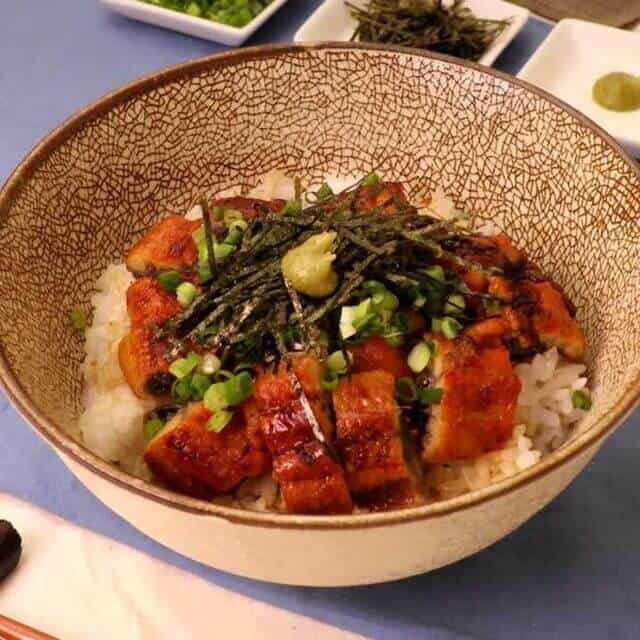
The meaning of hitsumabushi is based on its characters. Moreover, th word “hitsumabushi” comes from finely chopped eel kabayaki sprinkled on rice in a box. When written in kanji, locals wrote it as “kabukamashi (櫃まぶし)” or “kabukamashi (櫃塗し),” but it is “hitsumabushi (ひつまぶし)” in hiragana. Since it is also called “hitsumamushi (ひつまむし),” there is a theory that the word “eel” or “mamushi” comes from the Kyoto-Osaka region.
What is Hitsumabushi?
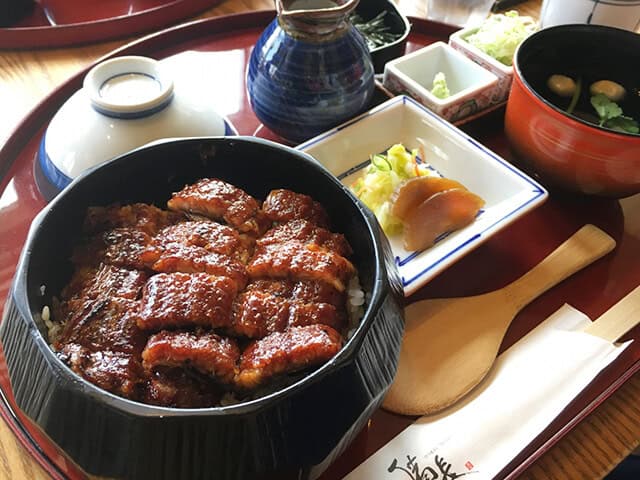
Hitsumabushi is a traditional Japanese food with a lot of grilled eel on top of the rice bowl. It is one of Nagoya’s famous specialty cuisines and a must-try for foreigners. Locals usually serve this dish with wasabi, chopped seaweed, chopped green onions, and tea. If you already tried Unadon or Unagi Don, locals eat Histumabushi differently compare to it. You can devise another way to eat it, but you can sprinkle the spices on the eel on top of rice or making them into tea.
The eel skin is also fragrant, and the body is plump. The basic style is to cut the meat of the eel, then grill it in meshibitsu and put it on rice in a container. The interesting part here is that you have to eat it in a tea bowl (chawan), which is the dish’s origin.
Hitsumabushi Origin

There are various theories about the origin of this dish, and it is not known exactly. Since the Muromachi period in 1399, locals have eaten Eel as kabayaki or cut it into cylinders and grilled on skewers. After that, due to the reclamation during the development of the Edo period, eels began to inhabit the wetlands, and eel kabayaki became popular to all.
It seems that “Atsuta Horaiken” in front of Atsuta Jingu in Nagoya City, Aichi Prefecture is the birthplace of Hitsumabushi. Atsuta Horaiken was a kaiseki restaurant that Jinzo Suzuki founded in the 6th year of the Meiji era. Still, it was popular when it served finely chopped eel rice with soup stock a dish called Hitsumabushi was born. Since then, many people eat this, and becomes a popular eel dish throughout Japan.
Hitsumabushi Recipe
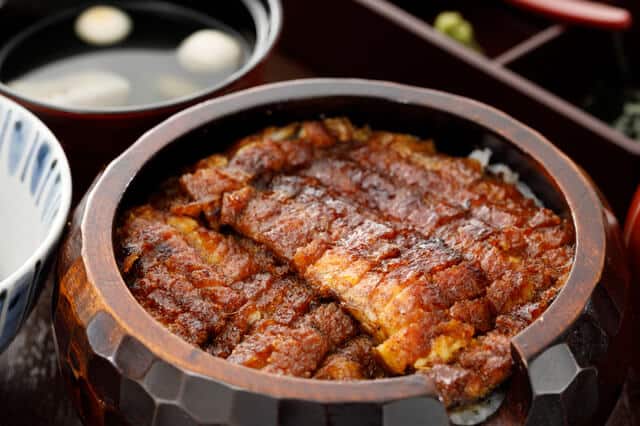
Knowing the hitsumabushi recipe is a must. Firstly, let us know what the hitsumabushi ingredients are. These include Kabayaki eel, sake (Japanese cooking wine), rice, Unagi no Tare (marinate sauce), wasabi, spring onion, nori, water, soup stock, soy sauce.
How to Make Hitsumabushi?
Cook 3 cups of rice, then chopped spring onion. Cut the Nori seaweed into small thin pieces with kitchen scissors and prepare the wasabi.
Make Ochazuke soup. Bring the water to a boil and add the 1 tsp Japanese sauce stock and 1/2 tsp soy sauce. (Reheat just before eating).
Clean the eel with water, then soak the sauce on the surface of the eel. Remove excess with kitchen towel.
Place the crumpled aluminum foil on the frying pan and place the eel on it. (Cut eels according to the size of the frying pan.) Sprinkle sake, then cover it, and steam over low heat for 4-5 minutes.
Place the rice on a frying pan made from the eel. Sprinkle half bottle of Unagi-no-tare.
Cut the steamed eel into 1cm width. Place all of the eels on the rice. If you have a cooking burner, bake the eel surface to make it more delicious.
You can enjoy it in three ways. Firstly, you eat it just like it. The second one is you can mix some spring onion on it, nori, and wasabi.
What are the health benefits of eating eel?

Eel is a high-protein and very nutritious fish, and it is a very valuable fish not only in terms of its taste but also in terms of nutrition. For the carb-conscious, eel contains no sugar and is low in sodium and high in phosphorus. It is rich in omega-3 fatty acids and protein, which is great for protecting the heart and maintaining healthy bones. With it also improving blood pressure, lowering cholesterol, and reducing the risks of diabetes and arthritis.
How to Eat Hitsumabushi?
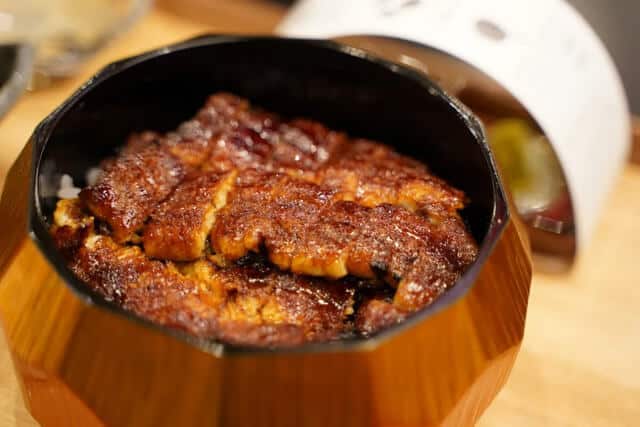
The dish is also served in a very specific way – everything is divided into four portions. The first portion is eaten as it is. The second is accompanied by condiments such as nori seaweed, chopped green onions, and wasabi. The third portion is the same as the second, with the addition of dashi broth or green tea (eaten like a soup), and the last portion is eaten however you like.
The difference between Hitsumabushi, Unadon, and Unajyu
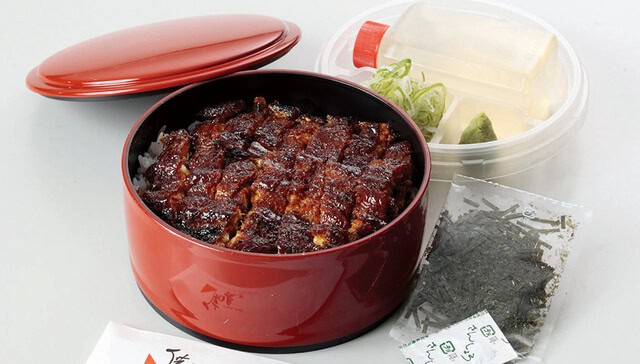
Japanese often serve Unagi Kabayaki over rice. The grilled eel topping itself is the “Unagi no Kabayaki (鰻の蒲焼)“. If you see that the shop used the square lacquered tableware known as oju, it is “unaju.” If the largish ceramic bowl known as don is used, it is called unadon. If the circular vessel known as ohitsu is used, it is called hitsumabushi.
Hitsumabushi is a bit different than your standard Unagi-don (grilled eel over rice) in that a lot more toppings are added to it, with a few more ways of eating it. And also, the way it is eaten is a bit different than a standard donburi meal. You can pour hot tea into the bowl for a delicious meal of “O-chazuke” or have it the way it is. “Unajyu” is a summer stamina food that you will want to eat when it gets hot. It used to be food for the common people, but now it is a rare fish and is treated as a high-class food, and some people use it for entertainment and dinner parties. Compared to unajyu, the eel in hitsumabushi is sliced more finely, making it easier to eat.
Recommended Hitsumabushi Restaurants
There are many restaurants in Nagoya and Tokyo where you can eat “Hitsumabushi.” Not to mention the traditional “Hitsumabushi” that each restaurant has kept for many years.
Atsuta Horaiken (Nagoya)
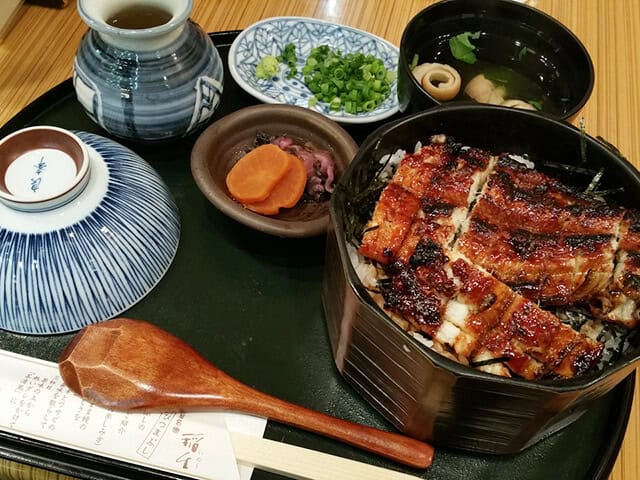
“Hitsumabushi” is a registered trademark of “Atsuta Houraiken,” a long-established restaurant founded in 1897. The second-generation owner devised a wooden bowl (ohitsu) so that the bowl would not break when the shop delivered the eel bowl, and when customers ate the eel first, the eel was cut into small pieces and mixed with rice; it was well-received.
Hitsumabushi Bicho Dai Nagoya Building (Nagoya)
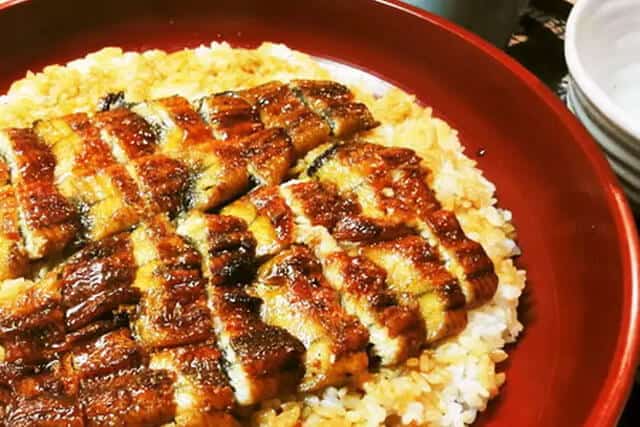
It is a popular shop where you can enjoy Nagoya’s specialties while shopping. As the store name suggests, they use Bicho charcoal as the charcoal. Regardless of the origin of the eel, they carefully select the most delicious eel, and the skin is soft and slightly oily. The skin is fragrant, and the body is plump, so it goes well with the condiments of green onions and wasabi.
Miyakagi (Nagoya)

Founded in 1899, and it is a long-established restaurant that serves “Kashiwa (chicken)” and “eel” dishes that continue to preserve the traditional taste. Not only locals but also many fans always stop by when visiting Nagoya. “Hitsumabushi” is recommended along with the standard menu “Oyakodon” of “Miyakagi.” You can enjoy domestically produced eels that have been fluffy baked with exquisite heat using the secret sauce from the establishment.
Asakusa Unatetsu (Tokyo)
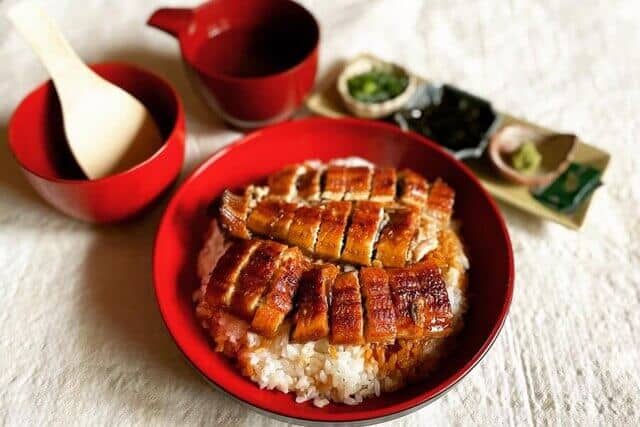
If you want to talk about delicious Hitsumabushi in Tokyo, “Una Tetsu” is indispensable. They are proud of the Edo-style Hitsumabushi that they pioneered for the first time in Tokyo. In addition to Hitsumabushi, they also serve many eel dishes. The crispy eel changes depending on how one eats it. Ochazuke with seasoning on top of fragrant eel is superb. There is also a great value set with salads and spices at lunchtime.
Inageya (Tokyo)

Inageya handles a variety of delicacies, with a focus on home-grown eel and chicken dishes. It is a restaurant where you can enjoy delicious eels in both Kansai and Kanto styles. You can also select Hitsumabushi, and they serve Ochazuke with soup stock with condensed umami. It is delicious enough to serve as many cups as you like. The accent of chives and seaweed that comes out together is also exquisite.
Conclusion
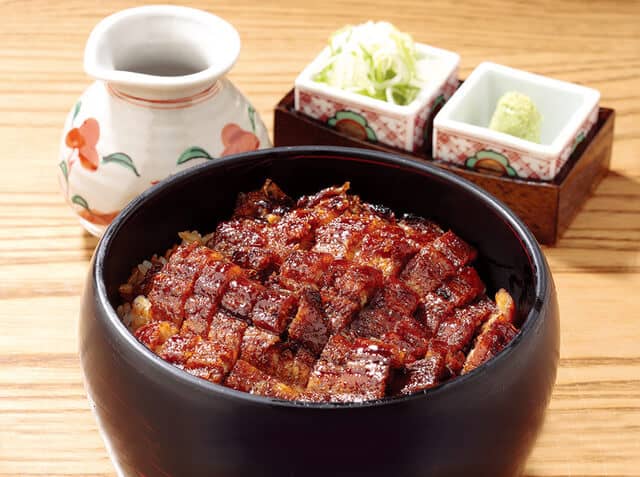
When people talk about Japan, unagi (eel) usually pops into people’s minds. Like sushi, Japan is very famous for its unagi, and usually, the image we have is a tender slice of eel with sweet sauce over a bowl of Japanese rice. However, Nagoya seems to have taken the simple unagi dish to a whole new level. Although it has been part of Nagoya tradition and not something new, Nagoya has its own different way of eating this delicacy.

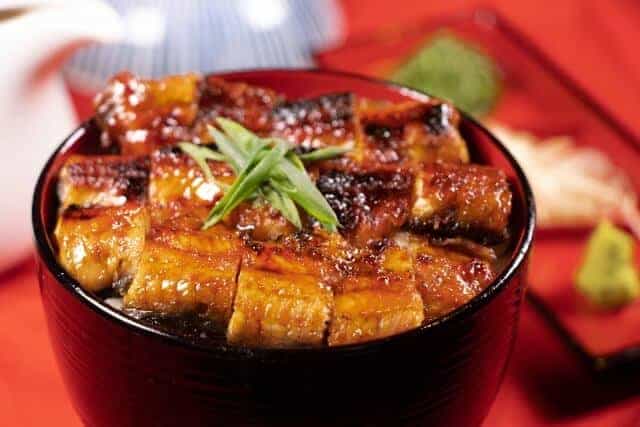
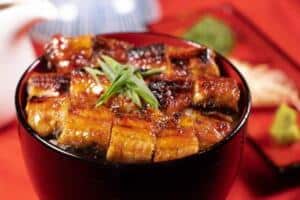
Comments